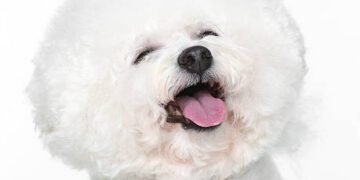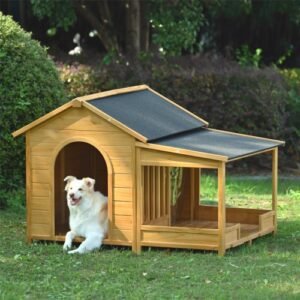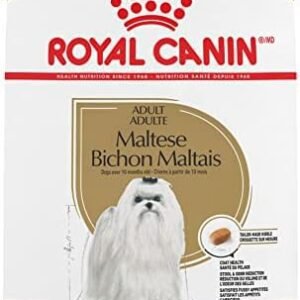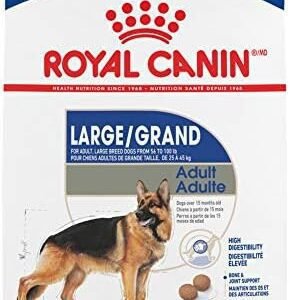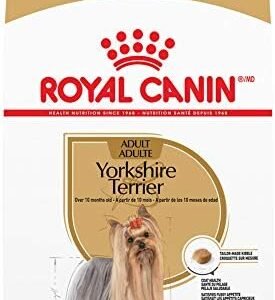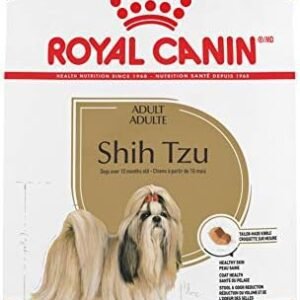Introduction:
The Cheagle, a captivating blend of Chihuahua and Beagle breeds, brings a unique charm to the world of canine companionship. In this exploration, we’ll unravel the distinctive characteristics, rich history, and essential care aspects that make the Cheagle stand out as an ideal addition to your home. From their size and appearance to their temperament and health considerations, this guide covers every facet of the Cheagle experience.
What Sets Cheagle Apart:
To embark on a journey with a Cheagle is to embrace a canine companion that seamlessly combines the loyalty and alertness of the Chihuahua with the sociable and curious nature of the Beagle. Their small to medium-sized stature, expressive eyes, and distinctive ears contribute to an irresistible charm that captivates dog enthusiasts worldwide.

Table of Contents
Cheagle Breed Characteristics:
Physical Features:
The Cheagle inherits a harmonious blend of physical traits from its Chihuahua and Beagle ancestors. Their small to medium-sized bodies boast a well-proportioned frame, adorned with a sleek coat that comes in a variety of colors. The combination of expressive eyes and distinctive ears adds to their overall appeal.

Temperament and Personality:
Renowned for their lively and friendly nature, Cheagles are true social butterflies. Their adaptable temperament makes them well-suited for various living situations, whether in cozy apartments or spacious houses with yards. Despite their small size, they exude a big personality, embodying the alertness of the Chihuahua and the amiable nature of the Beagle.
Exercise and Energy Levels:
Cheagles strike a delightful balance between the Beagle’s love for outdoor activities and the Chihuahua’s preference for indoor coziness. Daily walks, engaging play sessions, and mental stimulation are vital to keep them both happy and healthy. This mix of physical and mental exercise ensures a well-rounded lifestyle for these energetic canines.
Breed History and Origin:
Fusion of Chihuahua and Beagle:
The Cheagle’s roots can be traced back to a purposeful blending of the Chihuahua and Beagle breeds. This intentional mix aimed to amalgamate the loyalty and alertness of the Chihuahua with the sociable and curious nature of the Beagle. The result is a truly unique canine companion that embodies the best of both worlds.
Notable Traits from Ancestors:
From the Chihuahua, the Cheagle inherits traits such as unwavering loyalty, a strong bond with its owner, and a fearless demeanor. The Beagle influence brings forth friendliness, curiosity, and a keen sense of smell. Understanding this lineage is key to appreciating the distinct blend of characteristics that make the Cheagle truly special.
Cheagle as a Family Pet:

Compatibility with Children:
Cheagles, with their playful and affectionate nature, seamlessly integrate into family life. Their size and energy levels align well with households that have children. While early socialization is crucial, Cheagles often form strong bonds with kids, contributing to a lively and joyful family environment.
Social Interaction and Adaptability:
The Cheagle’s social nature extends to interactions with other pets. Their adaptability makes them versatile in multi-pet households, fostering a harmonious environment. Whether it’s a fellow canine companion or a feline friend, Cheagles tend to get along well with others.
Training and Obedience:
Cheagles, being intelligent dogs, respond well to training. Early and consistent training, incorporating positive reinforcement techniques, helps mold a well-behaved pet. Due to their alertness, Cheagles may excel in obedience training with proper guidance and patience.

Interactive Play:
Engaging in interactive play is essential for strengthening the bond between Cheagles and their human family. Activities like fetch, puzzle games, and obedience challenges provide both mental stimulation and physical exercise. These sessions contribute to a well-rounded and happy Cheagle.
Common Misconceptions:
Addressing misconceptions is crucial for potential Cheagle owners. One common misconception is related to their size, with some assuming they are delicate lap dogs. In reality, Cheagles are robust and enjoy an active lifestyle. Dispelling such myths helps individuals make informed decisions based on accurate information.
Caring for Your Cheagle:
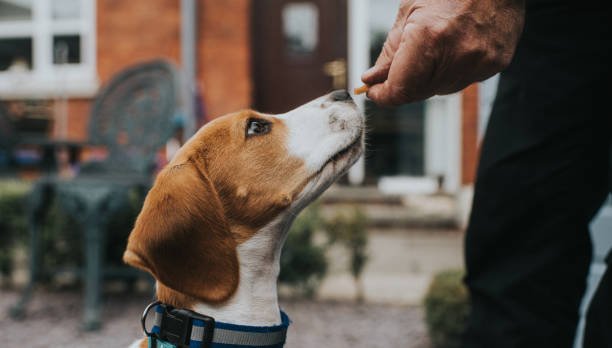
Diet and Nutrition:
Maintaining a balanced diet is vital for the overall health of Cheagles. High-quality dog food, appropriate portion sizes, and a feeding schedule tailored to their age and activity level contribute to their well-being. Consultation with a vet ensures nutritional requirements are met.
Exercise Requirements:
Cheagles thrive on a combination of physical and mental exercise. Daily walks, playtime in a secure yard, and interactive games keep them stimulated. It’s essential to incorporate activities that tap into their Beagle lineage’s love for scent-based games.
Grooming Tips:
Cheagles typically have a short to medium-length coat that requires moderate grooming. Regular brushing minimizes shedding and maintains a healthy coat. Bathing should be done as needed, and attention to dental care, nail trimming, and ear cleaning completes their grooming routine.
Health Considerations:
While generally healthy, Cheagles may be prone to health issues common to both Chihuahuas and Beagles. Regular veterinary check-ups are essential to monitor their health. Dental care, weight management, and preventive measures contribute to their overall well-being.
Training and Mental Stimulation:
Ongoing training is crucial for Cheagles, and mental stimulation activities prevent boredom. Interactive toys, puzzle games, and exposure to different environments during their formative weeks contribute to a well-adjusted and happy Cheagle.
Finding Your Cheagle:
Reputable Breeders:
When considering adding a Cheagle to your family, identifying reputable breeders is paramount. Thorough research, visits to breeding facilities, and requests for references contribute to responsible ownership. Reputable breeders prioritize the health and welfare of their dogs.
Adoption Options:
Adopting a Cheagle from shelters or rescue organizations is a compassionate choice. Many Cheagles, unfortunately, end up in shelters, and providing them with a loving home is a rewarding experience. Check local shelters, breed-specific rescues, and online platforms for potential adoption options.
Questions to Ask:
When considering a Cheagle from a breeder or adoption agency, asking relevant questions is crucial. Inquire about the dog’s health history, vaccinations, and any potential genetic issues. Details about the living conditions and early socialization efforts provide insights into the Cheagle’s upbringing.
Preparation Checklist:
Before bringing a Cheagle into your home, preparation is key. Create a designated space with a comfortable bed, food and water bowls, and suitable toys. Puppy-proofing your home ensures a safe environment. Stocking up on essentials like high-quality dog food and grooming tools sets the stage for a smooth transition.
Transitioning to Your Home:
The initial transition period is crucial for a Cheagle adjusting to a new home. Gradual introductions to different areas, establishment of routines, and providing a sense of security contribute to a positive transition. Patience, love, and positive reinforcement build a strong bond during this period.
Popularity and Recognition:
Current Popularity:
The Cheagle has gained popularity in recent years, reflecting the growing interest in mixed-breed companions. Their family-friendly nature, adaptability, and charming personality contribute to their desirability among dog owners. Online communities and social media platforms showcase the appeal of these delightful hybrids.
Desirability Factors:
Several factors contribute to the Cheagle’s desirability:
- Adaptability: Their ability to adapt to various living environments appeals to individuals with diverse lifestyles.
- Size and Manageability: The Cheagle’s moderate size makes them manageable for both apartment dwellers and those with more spacious homes.
- Playful Nature: Their playful and affectionate temperament makes them sought after for families and individuals seeking engaging companions.
Breed Recognition:
While not officially recognized by major kennel clubs, the Cheagle has gained acceptance in hybrid and designer dog registries. These registries acknowledge the unique qualities of mixed breeds, providing a platform for breeders and owners to connect.
Conclusion:
In conclusion, the Cheagle is more than just a blend of Chihuahua and Beagle; it’s a harmonious fusion of loyalty, playfulness, and adaptability. Understanding their physical and behavioral traits, coupled with responsible ownership practices, ensures a fulfilling relationship between Cheagles and their human companions. Whether through reputable breeders or adoption, welcoming a Cheagle into your life opens the door to a world of joy, companionship, and canine charm.
Breed History and Origin:
Exploring Their Roots:
The Cheagle’s journey begins with a purposeful blending of the Chihuahua and Beagle breeds, a deliberate attempt to create a canine companion that encapsulates the best of both worlds. Understanding the history of these two parent breeds provides valuable insights into the Cheagle’s development.
Chihuahua Origins:
The Chihuahua, originating from the Mexican state of the same name, has a rich history dating back to ancient civilizations. Thought to be descended from the Techichi, a companion dog cherished by the ancient Toltec civilization, Chihuahuas were believed to have mystical qualities. Their diminutive size and bold personalities made them favored pets among royalty and nobility.
Beagle Heritage:
On the other hand, Beagles trace their roots to ancient hounds bred for hunting small game. The modern Beagle, as we know it, evolved in England during the Roman times. These compact yet robust dogs were prized for their exceptional sense of smell and stamina, making them ideal hunting companions. Over the centuries, Beagles gained popularity for their friendly demeanor and adaptability.
Notable Traits:
The Cheagle inherits a fascinating blend of traits from its Chihuahua and Beagle ancestors, creating a unique and captivating hybrid.
From Chihuahua:
- Loyalty: The unwavering loyalty of the Chihuahua is a hallmark trait passed on to the Cheagle. These dogs form strong bonds with their owners, often displaying a protective and devoted nature.
- Fearlessness: Chihuahuas are known for their fearless attitude, unafraid to take on challenges despite their small size. This fearlessness adds a touch of boldness to the Cheagle’s personality.
From Beagle:
- Friendliness: Beagles are renowned for their friendly and sociable nature, making them excellent companions. The Cheagle inherits this amiable disposition, contributing to their affable and approachable character.
- Curiosity: Beagles are curious explorers, led by their keen sense of smell. This trait is evident in Cheagles, making them inquisitive and playful companions.
Relevance of Origin:
The Cheagle’s origin story is not just a historical anecdote but a key to understanding their characteristics and behavior today.
Adaptability: The Beagle’s history as a hunting companion in various terrains and the Chihuahua’s resilience in diverse environments contribute to the Cheagle’s adaptability. Whether in urban apartments or countryside homes, Cheagles seamlessly adjust to their surroundings.
Sociability: The friendly and sociable nature of both parent breeds is deeply embedded in the Cheagle’s DNA. Their love for human interaction and compatibility with other pets can be traced back to the Beagle’s pack mentality and the Chihuahua’s affectionate disposition.
Keen Sense of Smell: The Beagle’s exceptional sense of smell, a trait honed through generations of hunting, is a distinctive feature inherited by the Cheagle. Engaging them in scent-based games and activities satisfies this instinct and provides mental stimulation.
In summary, exploring the roots of the Cheagle breed unveils a fascinating tapestry of history and purposeful breeding. The combination of Chihuahua and Beagle traits creates a canine companion that not only embodies the spirit of its ancestors but also adapts seamlessly to the diverse lifestyles of its human companions.
Cheagle as a Family Pet:

• Compatibility with Children: Explore how cheagle dogs interact with children and why they make good family pets.
• Social Interaction and Adaptability: Discuss the cheagle breed’s social nature and its ability to adapt to different environments.
• Training and Obedience: Provide insights into the cheagle breed’s intelligence and how they respond to training and obedience.
• Interactive Play: Highlight the importance of interactive play for cheagle dogs and suggest suitable games and activities.
• Common Misconceptions: Address any misconceptions about cheagle dogs, such as their size and temperament.
Understanding the Cheagle Breed’s Traits:
Physical Characteristics:
The Cheagle, born from the fusion of Chihuahua and Beagle genes, boasts a distinctive set of physical features. Understanding these characteristics is essential for potential owners to provide appropriate care and appreciate the unique charm of this hybrid.
-
Size: Cheagles typically fall into the small to medium-sized category. Their stature combines the compact frame of the Chihuahua with the slightly more robust build of the Beagle. This moderate size makes them adaptable to various living environments, from apartments to larger homes.
Coat Type and Colors: Cheagles often sport a sleek coat of short to medium length. The coat can come in a variety of colors, reflecting the diversity in their ancestry. Common colors include but are not limited to, fawn, tricolor, black and tan, or white and brown. Regular brushing helps maintain a healthy coat and minimizes shedding.
Distinctive Features: The Cheagle’s physical charm is accentuated by its expressive eyes and distinctive ears. Inherited from both parent breeds, these features contribute to the dog’s endearing and captivating appearance.
Temperament Overview:
The Cheagle’s temperament is a delightful blend of the Chihuahua’s alertness and the Beagle’s sociable nature. This unique mix results in a companion that brings joy and liveliness to any household.

Suitability as Family Pets: Cheagles are known for their compatibility with families. Their playful and affectionate nature makes them excellent companions for both adults and children. However, early socialization is crucial to ensure a harmonious relationship, especially with younger family members.
Compatibility with Other Pets: The Cheagle’s sociable demeanor extends to interactions with other pets. Whether it’s another dog, a cat, or smaller animals, Cheagles tend to get along well. This adaptability makes them a versatile addition to multi-pet households.
Environment Needs: While adaptable, Cheagles thrive in environments that provide a mix of indoor comfort and outdoor exploration. Access to a secure yard for play and exercise complements their need for mental and physical stimulation. Their adaptability to apartment living makes them suitable for various lifestyles.
- Common Behavioral Traits: Cheagles inherit a range of behavioral traits from their parent breeds. Positive attributes include loyalty, playfulness, and friendliness. However, potential challenges may arise due to their alert nature, leading to a tendency to bark when stimulated. Consistent training and positive reinforcement help manage and shape their behavior.
Understanding Their Needs:
To ensure a harmonious relationship with a Cheagle, it’s crucial to understand their specific needs and address them appropriately.
Safe Interaction with Children: Cheagles, with their playful and affectionate disposition, often form strong bonds with children. However, supervision during interactions is recommended, especially with younger children, to prevent unintentional rough play.
Adaptation to Other Pets: The Cheagle’s adaptability to other pets makes them an excellent choice for households with existing animals. Proper introductions and monitoring initial interactions contribute to a smooth integration.
Training Strategies: Cheagles, being intelligent dogs, respond well to positive reinforcement training. Consistency, patience, and incorporating interactive elements into training sessions keep them engaged and well-behaved. Addressing their alertness through training helps manage excessive barking.
Interactive Play Requirements: Interactive play is vital for the Cheagle’s physical and mental well-being. Engaging in activities like fetch, puzzle games, and obedience challenges not only provides stimulation but also strengthens the bond between the dog and its human family.
Common Misconceptions:
- Delicate Lap Dog Myth: One common misconception about Cheagles is related to their size. While they have a moderate stature, they are far from delicate lap dogs. Their robust build and energetic nature make them well-suited for active play and outdoor adventures.
Understanding and meeting these needs contribute to a fulfilling relationship with a Cheagle. Responsible ownership involves providing the right environment, training, and care to ensure their well-being and happiness.
Whether you are captivated by their physical charm, drawn to their vibrant personality, or seeking a versatile family companion, the Cheagle offers a unique canine experience that blends the best of the Chihuahua and Beagle breeds.
Popularity and Recognition:
Current Popularity:
The Cheagle has experienced a surge in popularity in recent years, reflecting the growing trend of interest in mixed-breed companions. This popularity can be attributed to several factors that contribute to the Cheagle’s desirability among dog owners.

Family-Friendly Nature: The Cheagle’s temperament, characterized by playfulness and adaptability, makes them well-suited for families. Their ability to get along with children and other pets adds to their appeal as a versatile family companion.
-
Adaptability to Various Lifestyles: The Cheagle’s moderate size and adaptable nature make them suitable for a range of living environments. Whether in a cozy apartment or a more spacious home, Cheagles can thrive, catering to individuals with diverse lifestyles.
Charming Personality: The combination of the Chihuahua’s loyalty and the Beagle’s friendly disposition results in a dog with a charming personality. This endearing mix resonates with individuals seeking engaging and affectionate canine companions.
- Online Presence: The rise of social media platforms and online communities dedicated to pets has played a significant role in showcasing the Cheagle’s appeal. Photos, videos, and anecdotes shared by Cheagle owners contribute to the breed’s visibility and popularity.
Breed Recognition:
While the Cheagle may not be officially recognized by major kennel clubs, it has gained acceptance in hybrid and designer dog registries. These specialized registries acknowledge the unique qualities of mixed breeds, providing a platform for breeders and owners to connect. The recognition in these registries contributes to the establishment and promotion of the Cheagle as a distinct and recognized hybrid breed.
Importance of Breed Recognition:
Community Building: Recognition in hybrid dog registries fosters a sense of community among Cheagle enthusiasts. It provides a platform for sharing experiences, exchanging information, and promoting responsible ownership practices.
Breeder Standards: Breed recognition sets standards for responsible breeding practices. Reputable breeders within these registries adhere to guidelines that prioritize the health, well-being, and ethical treatment of Cheagles.
Pedigree Documentation: While Cheagles may not have traditional pedigrees like purebred dogs, recognition in hybrid registries allows for the documentation of parentage and lineage. This information can be valuable for prospective owners and breeders.
Notable Breed Varieties:
While the Cheagle is primarily a mix of Chihuahua and Beagle, variations in the breed may exist, influenced by factors such as the specific Chihuahua and Beagle parent breeds involved. Some notable varieties or subtypes could include:
Size Variations: Cheagles may exhibit variations in size, leaning towards the smaller end if the Chihuahua parent is more dominant or larger if influenced by the Beagle parent.
Coat Colors: The Beagle’s influence may introduce a variety of coat colors, including tricolor patterns, black and tan, fawn, or white and brown. The specific combination of colors can vary among individual Cheagles.
Facial Features: While the distinctive ears and expressive eyes are characteristic of Cheagles, subtle variations in facial features may occur, influenced by the dominant traits inherited from either parent.
Understanding these potential varieties adds to the richness of the Cheagle breed, allowing for unique expressions of their Chihuahua and Beagle heritage.
In conclusion, the Cheagle’s popularity is on the rise, driven by its family-friendly nature, adaptability, and charming personality. While not officially recognized by major kennel clubs, acceptance in hybrid registries solidifies the Cheagle’s position as a distinctive and recognized breed. Whether through online communities, breed-specific events, or reputable breeders, the Cheagle continues to capture the hearts of dog enthusiasts seeking a delightful canine companion.
Health Considerations and Care:
Common Health Issues:
Ensuring the well-being of your Cheagle involves understanding potential health issues common to the breed. While these hybrids are generally robust, being aware of certain conditions allows for proactive care and early intervention.
-
Patellar Luxation: This is a common issue in small breeds, including Cheagles. It involves the dislocation of the kneecap, which can cause discomfort and lameness. Regular vet check-ups can help detect and address this condition.
Dental Problems: Both Chihuahuas and Beagles are prone to dental issues. Regular dental care, including brushing their teeth and providing dental chews, helps maintain good oral health for your Cheagle.
Obesity: Due to their love for food and potential genetic factors, Cheagles may be prone to obesity. Monitoring their diet, providing regular exercise, and avoiding excessive treats contribute to weight management.

Ear Infections: With Beagles having droopy ears, Cheagles may be susceptible to ear infections. Regular cleaning and inspection of the ears help prevent infections and maintain ear health.
Allergies: Cheagles, like their parent breeds, may develop allergies. Monitoring their skin and coat for any signs of irritation, and addressing potential allergens in their environment, can help manage this issue.
Lifespan and Longevity:
The average lifespan of a Cheagle ranges between 10 to 15 years, depending on factors such as genetics, diet, and overall care. To promote a longer and healthier life for your Cheagle, consider the following tips:
Balanced Diet: Providing a well-balanced and nutritious diet tailored to their age and activity level is crucial. Consult with your vet to determine the best dietary plan for your Cheagle.
Regular Exercise: Cheagles benefit from a mix of physical and mental exercise. Daily walks, play sessions, and engaging activities contribute to their overall well-being and help prevent obesity.
Veterinary Check-ups: Regular veterinary check-ups are essential for preventive care. Routine examinations, vaccinations, and discussions about any concerns contribute to early detection and treatment of potential health issues.
Dental Care: Good oral hygiene is linked to overall health. Regular teeth brushing, dental chews, and occasional professional dental cleanings support dental health and prevent related issues.
Weight Management: Maintaining a healthy weight is crucial for Cheagles. Obesity can lead to various health problems, including joint issues. Monitor their weight, adjust their diet as needed, and avoid overfeeding.
Grooming Routine: Regular grooming not only keeps your Cheagle looking their best but also allows for the early detection of skin issues, lumps, or abnormalities. Brush their coat, check ears, trim nails, and attend to grooming needs consistently.
Responsible Ownership Practices:
Being a responsible Cheagle owner involves a commitment to their health and well-being. Incorporating these practices into your routine fosters a happy and thriving relationship:
Education: Stay informed about the specific needs and characteristics of Cheagles. Understanding their breed traits and potential health issues allows you to provide the best care.
Preventive Healthcare: Proactive measures, such as vaccinations, preventive medications, and regular veterinary check-ups, contribute to the prevention and early detection of health issues.
-
Balanced Diet: Tailor their diet to meet nutritional requirements, avoiding excessive treats and human foods that may be harmful. Consult with your vet to create a diet plan that suits your Cheagle’s needs.
Regular Exercise: Create a routine that includes daily walks, playtime, and mental stimulation activities. Adequate exercise not only maintains physical health but also contributes to mental well-being.
Grooming Regimen: Establish a grooming routine that includes brushing, ear cleaning, dental care, and nail trimming. Regular grooming sessions not only keep your Cheagle clean but also allow you to monitor their overall health.
Attention to Behavioral Cues: Being attentive to changes in behavior, appetite, or activity levels helps identify potential health issues early. If you notice anything unusual, consult with your vet promptly.
- Spaying/Neutering: Responsible breeding practices involve spaying or neutering your Cheagle unless you have plans for responsible breeding. This not only prevents unwanted litters but also contributes to their overall health.
By embracing these health considerations and responsible ownership practices, you provide your Cheagle with the foundation for a happy, healthy, and fulfilling life. Your commitment to their well-being ensures that they thrive as a cherished member of your family.
Remember, the key to a joyful and enduring companionship with your Cheagle lies in the balance of love, care, and responsible stewardship.
Exercise and Activity Recommendations:
Keeping your Cheagle physically and mentally stimulated is key to ensuring a happy and healthy life. Their moderate energy levels and versatile nature allow for a variety of exercise options. Here’s a comprehensive guide to meeting your Cheagle’s exercise needs:
Types of Exercise:
1. Playtime:
- Fetch: Cheagles love to chase and retrieve. Playing fetch with a ball or a favorite toy is an excellent way to engage them physically.
- Tug of War: This interactive game not only provides physical exercise but also strengthens the bond between you and your Cheagle.

2. Outdoor Walks:
- Daily Walks: Aim for at least 30 minutes to an hour of daily walks. Cheagles enjoy exploring their surroundings and benefit from the mental stimulation outdoor walks provide.
3. Agility Training:
- Obstacle Courses: Set up a small agility course in your backyard or a nearby park. Use tunnels, hurdles, and cones to create a stimulating environment for your Cheagle.
4. Interactive Toys:
- Puzzle Toys: Keep their minds sharp with puzzle toys that dispense treats. This not only provides mental stimulation but also rewards them for problem-solving.
5. Swimming:
- Water Activities: If your Cheagle enjoys water, consider incorporating swimming into their routine. It’s a low-impact exercise that’s gentle on joints.
Duration and Frequency:
– Daily Engagement:
- Aim for at least 30 to 60 minutes of combined physical and mental exercise every day. This can be spread out across multiple sessions.
– Variety is Key:
- Rotate between different types of exercises to keep things interesting. Cheagles thrive on variety and enjoy new challenges.
– Monitoring Energy Levels:
- Pay attention to your Cheagle’s energy levels. If they seem restless, it may indicate a need for more exercise.
Breed-Specific Considerations:
– Scent-Based Activities:
- Incorporate activities that tap into their Beagle lineage’s love for scent-based games. Hide treats or toys around the house or yard for them to find.
– Interactive Play with Other Dogs:
- If possible, arrange playdates with other dogs. Cheagles, being social, often enjoy the company of fellow canines.
– Adjusting for Age:
- Puppies may have bursts of energy and shorter attention spans, requiring more frequent, shorter sessions. Older Cheagles may benefit from activities that are gentler on joints.
Tips for a Successful Exercise Routine:
– Positive Reinforcement:
- Use treats and praise to reinforce positive behavior during exercise. This encourages them to view activities as enjoyable and rewarding.
– Consistency is Key:
- Stick to a consistent exercise routine. Cheagles, like many dogs, thrive on predictability and routine.
– Observe Health Conditions:
- Be mindful of any health conditions your Cheagle may have. Adjust the intensity and duration of exercises accordingly.
– Consult with Your Vet:
- Before starting any new exercise regimen, especially for puppies or senior Cheagles, consult with your veterinarian to ensure it’s appropriate for their age and health status.
By tailoring your Cheagle’s exercise routine to their needs and incorporating a mix of activities, you’ll not only keep them physically fit but also strengthen the bond between you and your furry companion. Remember, a tired Cheagle is a happy Cheagle!
Nutrition and Feeding Guidelines for Cheagles
The Cheagle, a delightful fusion of Chihuahua and Beagle breeds, requires a thoughtful approach to nutrition to ensure their overall health and well-being. In this section, we’ll delve into specific dietary recommendations, potential restrictions or allergies, feeding schedules, and portion control tailored to the unique needs of Cheagles.
Dietary Recommendations:
Considering Size, Age, and Activity Level:
Cheagles fall into the small to medium-sized category, and their dietary needs are influenced by factors such as size, age, and activity level. Here are some key considerations:
Puppy Nutrition: For Cheagle puppies, a diet rich in high-quality puppy food is essential. Puppies undergo rapid growth and development, requiring a balanced mix of protein, fats, vitamins, and minerals. Consultation with a veterinarian helps determine the appropriate puppy food and feeding frequency.
Adult Maintenance: As Cheagles transition into adulthood, maintaining a balanced diet becomes crucial. High-quality dog food designed for small to medium breeds is recommended. Protein content should be sufficient to support their energy needs, while fat levels must be moderated to prevent obesity.
Senior Care: In their senior years, Cheagles may benefit from specialized senior dog food. These formulations often address age-related concerns such as joint health and may have adjusted calorie levels to accommodate lower activity levels. Regular veterinary check-ups help tailor the diet to the individual dog’s health status.
Dietary Restrictions and Allergies:
Cheagles, like any other breed, may have specific dietary restrictions or allergies. Common allergens for dogs include grains, certain proteins, and artificial additives. It’s essential to monitor the dog’s reactions to different foods and consult with a vet if allergies are suspected.
Grain-Free Options: Some Cheagles may thrive on a grain-free diet, while others may not require such restrictions. Grain-free dog food can be beneficial for those with grain allergies or sensitivities. However, it’s crucial to ensure the diet remains balanced and meets all nutritional requirements.
Protein Sensitivities: Monitoring the dog’s response to specific protein sources is essential. Cheagles may have sensitivities to certain proteins like chicken or beef. Rotating protein sources or opting for novel protein sources can be considered if sensitivities are identified.
-
Artificial Additives: Cheagles, being a small breed, may be more sensitive to artificial additives and preservatives. Choosing dog food with minimal artificial ingredients promotes overall health and reduces the risk of adverse reactions.
Feeding Schedules and Portion Control:
Establishing a Routine:
Establishing a consistent feeding schedule contributes to a Cheagle’s overall well-being. While individual needs may vary, a typical feeding routine includes:
Puppy Feeding Frequency: Cheagle puppies often require more frequent meals to support their growth. A typical schedule involves three to four small meals spread throughout the day. As they mature, the number of meals can gradually decrease.
Adult Dogs: Adult Cheagles usually thrive on two meals a day. Consistency in feeding times helps regulate their metabolism and prevents digestive issues. Morning and evening feedings provide a routine that dogs appreciate.
Senior Dogs: Senior Cheagles may benefit from smaller, more frequent meals to accommodate changes in metabolism and digestion. Adjusting portion sizes based on activity level and weight management becomes crucial in their senior years.
Portion Control:
Proper portion control is vital to prevent obesity and maintain a healthy weight. Factors such as age, activity level, and metabolism influence the appropriate portion sizes. Here are general guidelines:
Follow Package Recommendations: Commercial dog food packages typically provide feeding guidelines based on weight and age. These guidelines offer a starting point, but individual adjustments may be necessary.
Monitor Body Condition: Regularly assessing the dog’s body condition helps determine if portion sizes need adjustment. Ribs should be easily felt with a slight covering of flesh, and the waist should be visible when viewed from above.
Avoid Overfeeding: Cheagles may have a tendency to gain weight, especially if overfed or given excessive treats. Monitoring treat intake and adjusting regular meal portions accordingly is essential to prevent obesity-related health issues.
In conclusion, understanding the specific nutritional needs of Cheagles based on their size, age, and activity level is crucial for responsible pet ownership. Consulting with a veterinarian for personalized advice, monitoring for allergies or sensitivities, and establishing a consistent feeding routine contribute to the overall health and happiness of these charming canine companions.
Personal Stories and Testimonials:
Real-Life Experiences with Cheagles:
Understanding the Cheagle breed goes beyond factual information; it involves delving into the real-life experiences of those who have welcomed these charming companions into their homes. Here are some personal stories and testimonials from Cheagle owners, sharing their unique journeys, challenges, and the joys of having a Cheagle as part of their family.
Story 1: A Tale of Unconditional Love
“Our Cheagle, Max, came into our lives unexpectedly, and it was the best surprise we could have ever received. His playful antics and affectionate nature quickly won our hearts. Max has this incredible ability to sense our emotions, providing comfort during challenging times. He’s not just a pet; he’s family. Owning a Cheagle has been a journey filled with laughter, love, and unwavering companionship.” – Sarah, Cheagle Owner
Story 2: Overcoming Challenges Together
“Adopting our Cheagle, Bella, presented some training challenges initially. She had a penchant for barking, especially when excited. With consistent training and positive reinforcement, Bella transformed into a well-behaved and obedient companion. The journey taught us patience and the importance of understanding the unique traits of the Cheagle breed. Bella’s boundless energy and affection make every day an adventure.” – Mike and Lisa, Cheagle Owners
Story 3: From Shelter to Forever Home
“We decided to adopt a dog, and there she was – a Cheagle named Daisy at the local shelter. Daisy had an instant connection with our children, and her adaptability amazed us. From the shelter to our home, Daisy has brought immeasurable joy. Her playful interactions with the kids and her loving demeanor have turned our house into a home. Adopting a Cheagle was the best decision we ever made.” – The Johnson Family, Proud Cheagle Owners
Cost of Owning a Cheagle:
Owning a Cheagle comes with various expenses, and understanding the financial commitment is crucial for responsible ownership. Here’s a breakdown of the costs associated with having a Cheagle as your canine companion:
Upfront Costs:
Adoption or Purchase: The initial cost may include adoption fees if you choose to adopt from a shelter or the purchase price from a breeder.
Vaccinations and Microchipping: Ensuring your Cheagle is up-to-date on vaccinations and has a microchip for identification involves initial costs.
Spaying/Neutering: If not done prior to adoption or purchase, spaying or neutering is an essential upfront expense.
- Basic Supplies: This includes essentials like a collar, leash, food and water bowls, a comfortable bed, and appropriate toys.
Ongoing Expenses:
High-Quality Dog Food: Providing a balanced and nutritious diet is a continuous expense. High-quality dog food contributes to your Cheagle’s overall health.
Veterinary Care: Regular check-ups, vaccinations, and preventive care contribute to your Cheagle’s well-being. Emergency veterinary expenses should also be considered.
Grooming: While Cheagles have moderate grooming needs, occasional grooming expenses such as nail trimming, ear cleaning, and bathingshould be factored in.
Training and Enrichment: Ongoing training sessions, interactive toys, and mental stimulation activities are essential for a happy and well-behaved Cheagle.
Insurance: Consideration of pet insurance helps cover unexpected veterinary costs and ensures your Cheagle receives prompt medical attention when needed.
Boarding or Pet Sitting: If you travel or have commitments that require time away from home, boarding or pet sitting costs should be considered.
Importance of Budgeting:
Budgeting for your Cheagle’s needs is a responsible and essential aspect of ownership. It ensures that you can provide the best care for your canine companion without compromising their well-being. By understanding the financial commitment and planning accordingly, you contribute to a happy and healthy life for your Cheagle.
Owning a Cheagle is not just about the initial excitement; it’s a long-term commitment filled with love, laughter, and shared moments. By embracing the responsibilities and joys of Cheagle ownership, you become part of a community of dedicated and passionate dog lovers who have found a special place in their hearts for this unique canine fusion.
Grooming and Care for Your Cheagle:
General Grooming Advice:
Grooming your Cheagle is an essential aspect of responsible ownership, contributing to their overall health and happiness. Here are some general tips to keep your Cheagle looking and feeling their best:
Brushing:
Cheagles typically have a short to medium-length coat that requires regular brushing. Brushing helps minimize shedding, removes loose hair, and keeps their coat shiny. Aim to brush your Cheagle at least two to three times a week to maintain a healthy coat and reduce the risk of matting.
Bathing:
Bathing should be done as needed, usually when your Cheagle gets dirty or starts to develop a doggy odor. Use a mild dog shampoo, and be sure to rinse thoroughly to avoid any skin irritation. Over-bathing can strip their coat of natural oils, so it’s best to bathe them when necessary.
Dental Care:
Like many small breeds, Cheagles can be prone to dental issues. Establish a regular dental care routine, including brushing your Cheagle’s teeth several times a week. Dental chews and toys can also help promote good oral health.
Nail Trimming:
Regular nail trims are crucial for your Cheagle’s comfort and mobility. If you hear their nails clicking on the floor, it’s time for a trim. Use dog nail clippers or a grinder, and be cautious not to cut into the quick. If you’re unsure, consult your veterinarian or a professional groomer.
Ear Cleaning:
Cheagles may be prone to ear infections due to their floppy ears. Check their ears regularly for signs of redness, odor, or discharge. Clean their ears with a veterinarian-approved ear cleaner to prevent wax buildup and infections.
Specific Accessories and Care Products:
To enhance your grooming routine and ensure the well-being of your Cheagle, consider these specific accessories and care products tailored to their needs:
Grooming Tools:
Invest in high-quality grooming tools, including a slicker brush for removing loose hair, a dog comb for detangling, and nail clippers or a grinder for regular nail maintenance. Having the right tools makes the grooming process more comfortable for both you and your Cheagle.
Harness:
Due to their small size and delicate tracheas, Cheagles may benefit from using a harness instead of a collar, especially during walks. A harness distributes pressure more evenly and reduces the risk of injury to the neck.
Toys for Mental Stimulation:
Cheagles are intelligent dogs that thrive on mental stimulation. Provide them with interactive toys, puzzle games, and chew toys to keep their minds engaged. This not only prevents boredom but also strengthens the bond between you and your furry friend.
Quality Dog Food:
Nutrition plays a significant role in your Cheagle’s overall health. Choose a high-quality dog food that meets their specific dietary needs based on factors like age, size, and activity level. Consult with your vet to determine the best diet for your Cheagle.
Comfortable Bed:
A comfortable bed is essential for your Cheagle to have a cozy and secure space to rest. Consider a bed with suitable size and support for their small to medium-sized frame. This becomes particularly important as Cheagles may have a tendency to seek out warm and comfortable spots.
Puzzle Feeders:
Cheagles enjoy a good mental challenge, and puzzle feeders are an excellent way to combine mental stimulation with mealtime. These feeders dispense kibble or treats as the dog interacts with the puzzle, providing entertainment and slowing down their eating pace.
In conclusion, grooming and care for your Cheagle involve a combination of regular maintenance and providing them with the right accessories. Tailoring your approach to their specific needs ensures a happy and healthy life for your delightful Cheagle companion.
Choosing and Adopting a Cheagle Dog Breed:
Reasons for Adoption:
Adopting a Cheagle is a rewarding experience that not only brings joy to your life but also provides a second chance for a rescue dog. Several compelling reasons make adopting a Cheagle a great choice:
Rescue and Second Chances: Many Cheagles end up in shelters or rescue organizations due to various reasons, including changes in family circumstances or the challenges of mixed-breed ownership. Choosing adoption gives these dogs a second chance at a loving home.
Reducing Overpopulation: By adopting, you contribute to the efforts to reduce pet overpopulation. Shelters often struggle with limited resources, and giving a home to a rescued Cheagle helps alleviate the burden on these facilities.
- Pre-Existing Training: Some adopted Cheagles may already have basic training and socialization. This can be advantageous for individuals or families looking for a companion with a head start in adapting to home life.
Research and Preparation:
Before adopting a Cheagle, thorough research and preparation are essential to ensure a smooth transition and a successful integration into your home. Here are key aspects to consider:
- Understanding Cheagle Breed-Specific Needs: Cheagles have specific needs based on their Chihuahua and Beagle lineage. Researching these needs, such as exercise requirements, grooming, and potential health concerns, helps you prepare for responsible ownership.
- Financial Responsibilities: Owning a dog comes with financial responsibilities. Ensure you are prepared for expenses such as veterinary care, food, grooming supplies, and other essentials. Planning for these costs ensures you can provide the best care for your adopted Cheagle.
- Home Environment: Evaluate your living situation to determine if it’s suitable for a Cheagle. Consider factors like available space, access to outdoor areas, and any existing pets. Creating a safe and welcoming environment is crucial for the well-being of your new furry friend.
Adoption Process:
The adoption process for a Cheagle typically involves several steps designed to ensure a good match between the dog and its new family. Here’s an overview of what to expect:
- Application: Start by filling out an adoption application from a reputable rescue organization or shelter. This form helps the organization understand your living situation, experience with pets, and your expectations for a Cheagle.
- Home Visit: Some rescues may conduct a home visit to assess the environment and ensure it’s safe and suitable for a Cheagle. This step aims to verify the information provided in the application and address any potential concerns.
- Meeting the Cheagle: Once your application is approved, you’ll have the opportunity to meet potential Cheagles. Spend time interacting with them to gauge their temperament and see if there’s a connection. This step is crucial for building a bond with your future pet.
- Adoption Fees: Be prepared for adoption fees, which help cover the costs of veterinary care, vaccinations, and other expenses incurred by the rescue organization. The fee structure varies, but it’s a small investment compared to the love and companionship you receive in return.
Breeding and Ethical Considerations:
While adoption is a wonderful option, some individuals may choose to explore reputable breeders. In such cases, it’s essential to prioritize responsible breeding practices and ethical considerations:
- Health Screening: Reputable breeders conduct thorough health screenings for their breeding dogs to identify and address any potential genetic issues. This commitment to health ensures the well-being of both parent dogs and their offspring.
- Genetic Diversity: Maintaining genetic diversity is crucial in preventing inherited health problems. Responsible breeders work to diversify the gene pool, reducing the risk of hereditary conditions in the Cheagle breed.
- Ethical Treatment: Choose breeders who prioritize the welfare of their dogs. Responsible breeding involves ethical treatment, adequate living conditions, and a genuine concern for the physical and mental well-being of the animals.
In conclusion, whether you choose adoption or opt for a reputable breeder, the key is to prioritize the well-being of the Cheagle breed. Responsible ownership practices, combined with ethical considerations, contribute to the overall health and happiness of these delightful canine companions.
Frequently Asked Questions (FAQs) about Cheagle Dogs
Q: Are Cheagles good for apartment living?
- A: Yes, Cheagles adapt well to apartment living due to their moderate size and adaptable nature. However, regular exercise is essential to keep them happy.
Q: What is the typical lifespan of a Cheagle?
- A: Cheagles generally have a lifespan of 12 to 15 years, provided they receive proper care, nutrition, and regular veterinary check-ups.
- Q: Do Cheagles get along with children?
- A: Yes, Cheagles are known for their compatibility with children. Early socialization is crucial to ensure a positive and safe interaction.
Q: How much exercise do Cheagles need daily?
- A: Cheagles require moderate daily exercise, including walks and play sessions. Their Beagle lineage’s love for outdoor activities should be taken into account.
Q: Are Cheagles prone to specific health issues?
- A: While generally healthy, Cheagles may inherit health concerns from their parent breeds. Regular veterinary check-ups are essential for preventive care.
- Q: Do Cheagles shed a lot?
- A: Cheagles have ashort to medium-length coat and moderate shedding. Regular brushing helps minimize shedding and keeps their coat healthy.
Q: Can Cheagles be left alone for long periods?
- A: Cheagles may experience separation anxiety if left alone for extended periods. It’s advisable to provide mental stimulation and companionship.
Q: Are Cheagles easy to train?
- A: Yes, Cheagles are intelligent and respond well to positive reinforcement training. Consistency and patience are key to successful training.
- Q: What is the best diet for a Cheagle?
- A: A balanced diet with high-quality dog food, tailored to their age and activity level, is crucial for a Cheagle’s overall health. Consultation with a vet is recommended.
- Q: Are Cheagles recognized by major kennel clubs?
- A: No, Cheagles are not officially recognized by major kennel clubs. However, they are accepted in hybrid and designer dog registries that acknowledge mixed breeds.
These FAQs provide valuable insights into common queries about Cheagles, offering prospective owners a comprehensive understanding of this unique and lovable hybrid breed.
Understanding the Cheagle Breed’s Traits:
Physical Characteristics:
The Cheagle, born from the fusion of Chihuahua and Beagle genes, boasts a distinctive set of physical features. Understanding these characteristics is essential for potential owners to provide appropriate care and appreciate the unique charm of this hybrid.
- Size: Cheagles typically fall into the small to medium-sized category. Their stature combines the compact frame of the Chihuahua with the slightly more robust build of the Beagle. This moderate size makes them adaptable to various living environments, from apartments to larger homes.
- Coat Type and Colors: Cheagles often sport a sleek coat of short to medium length. The coat can come in a variety of colors, reflecting the diversity in their ancestry. Common colors include but are not limited to, fawn, tricolor, black and tan, or white and brown. Regular brushing helps maintaina healthy coat and minimizes shedding.
- Distinctive Features: The Cheagle’s physical charm is accentuated by its expressive eyes and distinctive ears. Inherited from both parent breeds, these features contribute to the dog’s endearing and captivating appearance.
Temperament Overview:
The Cheagle’s temperament is a delightful blend of the Chihuahua’s alertness and the Beagle’s sociable nature. This unique mix results in a companion that brings joy and liveliness to any household.
- Suitability as Family Pets: Cheagles are known for their compatibility with families. Their playful and affectionate nature makes them excellent companions for both adults and children. However, early socialization is crucial to ensure a harmonious relationship, especially with younger family members.
- Compatibility with Other Pets: The Cheagle’s sociable demeanor extends to interactions with other pets. Whether it’s another dog, a cat, or smaller animals, Cheagles tend to get along well. This adaptability makes them a versatile addition to multi-pet households.
- Environment Needs: While adaptable, Cheagles thrive in environments that provide a mix of indoor comfort and outdoor exploration. Access to a secure yard for play and exercise complements their need for mental and physical stimulation. Their adaptability to apartment living makes them suitable for various lifestyles.
- Common Behavioral Traits: Cheagles inherit a range of behavioral traits from their parent breeds. Positive attributes include loyalty, playfulness, and friendliness. However, potential challenges may arise due to their alert nature, leading to a tendency to bark when stimulated. Consistent training and positive reinforcement help manage and shape their behavior.
Understanding Their Needs:
To ensure a harmonious relationship with a Cheagle, it’s crucial to understand their specific needs and address them appropriately.
- Safe Interaction with Children: Cheagles, with their playful and affectionate disposition, often form strong bonds with children. However, supervision during interactions is recommended, especially with younger children, to prevent unintentional rough play.
- Adaptation to Other Pets: The Cheagle’s adaptability to other pets makes them an excellent choice for households with existing animals. Proper introductions and monitoring initial interactions contribute to a smooth integration.
- Training Strategies: Cheagles, being intelligent dogs, respond well to positive reinforcement training. Consistency, patience, and incorporating interactive elements into training sessions keep them engaged and well-behaved. Addressing their alertness through training helps manage excessive barking.
- Interactive Play Requirements: Interactive play is vital for the Cheagle’s physical and mental well-being. Engaging in activities like fetch, puzzle games, and obedience challenges not only provides stimulation but also strengthens the bond between the dog and its human family.
Common Misconceptions:
- Delicate Lap Dog Myth: One common misconception about Cheagles is related to their size. While they have a moderate stature, they are far from delicate lap dogs. Their robust build and energetic nature make them well-suited for active play and outdoor adventures.
Conclusion:
In concluding our exploration of the Cheagle breed, it’s essential to recap the key information covered in this comprehensive guide. The Cheagle, a harmonious fusion of Chihuahua and Beagle traits, brings a unique set of characteristics to the world of canine companionship.
Recap of Breed Characteristics:
- The Cheagle’s physical features showcase a blend of small to medium-sized stature, a sleek coat with various color possibilities, and distinctive eyes and ears inherited from its parent breeds.
- Their temperament combines the alertness of the Chihuahua with the sociable nature of the Beagle, making them adaptable to various living situations and excellent family pets.
Understanding Their Needs:
- Potential owners should be aware of the Cheagle’s specific needs, including safe interactions with children, adaptation to other pets, and the importance of consistent and positive reinforcement training.
Responsibility of Ownership:
- Responsible ownership is emphasized throughout this guide, highlighting the significance of proper care, training, and socialization. Meeting the Cheagle’s physical and mental needs ensures a happy and fulfilling relationship between the dog and its human family.
Encouragement for Adoption:
- While reputable breeders are an option, adoption is encouraged as a compassionate choice. Many Cheagles end up in shelters, and providing them with a loving home contributes to their well-being and happiness.
Final Thoughts:
In embracing a Cheagle into your life, you open the door to a world of joy, companionship, and canine charm. Whether through reputable breeders or adoption, the Cheagle promises a unique and delightful journey for those seeking a loyal, playful, and adaptable canine companion. As you embark on this adventure, remember that understanding and meeting the Cheagle’s needs are the keys to a lasting and fulfilling relationship.




